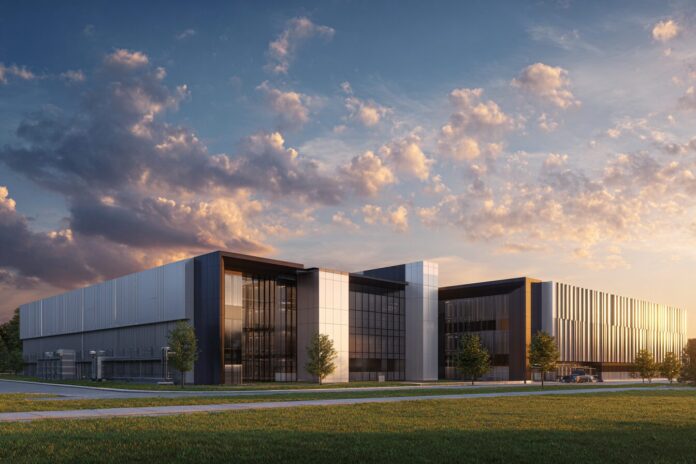Reinventing AI Leadership Through Internal Innovation and Investment
In 2025, Microsoft has notably intensified its commitment to artificial intelligence by focusing on internal innovation. This initiative is not just about external collaborations, but also about harnessing in-house expertise to shape the future of technology. Because the company is leveraging its own resources, it is setting a precedent in the global AI race.
Most importantly, these efforts demonstrate a broader strategy of technological sovereignty. By investing in proprietary AI models, Microsoft strengthens its competitive edge and underscores its dedication to a secure, ethical, and efficient AI landscape.
Transformative Investments Fueling the AI Future
Microsoft recently announced an impressive US$80 billion investment for AI-enabled data centers around the globe, with a major portion directed toward the United States. This significant investment addresses regulatory challenges, surging infrastructure demands, and heightened competition on the international stage. Therefore, these developments secure America’s role as a leader in the digital revolution, as further detailed by sources like AI Magazine.
Additionally, the move to enhance AI infrastructure serves to empower businesses and bolster economic growth. As Microsoft’s investments permeate every layer of its technology stack, the company is well-positioned to drive next-generation innovation, benefiting both industry partners and end users.
Homegrown Models: MAI-Voice-1 and MAI-1-preview
Microsoft’s AI division, guided by leaders such as Mustafa Suleyman, recently rolled out two groundbreaking models: MAI-Voice-1 and MAI-1-preview. Because these models are developed internally, they highlight Microsoft’s capability to tailor solutions for specific challenges and client demands. Moreover, MAI-Voice-1 has set new standards in speech generation while MAI-1-preview has enhanced text-based AI functionalities within Microsoft’s Copilot ecosystem.
Furthermore, the efficient use of only 15,000 Nvidia H100 GPUs for training MAI-1-preview exemplifies the company’s aptitude in optimizing performance with fewer resources. This deliberate resource management can dramatically reduce costs and enable more widespread adoption of advanced AI tools, as noted by research from Semafor and Aragon Research.
Why Build In-House? Control, Customization, and Competitive Edge
Building AI models internally offers numerous advantages. Firstly, it allows Microsoft to exercise full control over data management, algorithmic performance, and ethical considerations. Because this approach minimizes dependencies on external entities, it results in a flexible and secure technology ecosystem. Besides that, the rapid iteration from research to deployment enhances product integration across various Microsoft platforms.
Moreover, this strategy fosters a culture of innovation and responsiveness within the company. By having complete oversight of every stage, from design to execution, Microsoft can quickly adapt to shifting market conditions and technological trends. This internal control is crucial in today’s highly competitive landscape where speed and agility matter.
Scaling AI Education and Workforce Readiness
Recognizing the unprecedented impact of artificial intelligence, Microsoft is committed to preparing the workforce for the future. The company plans to train 2.5 million Americans in AI skills throughout 2025. Most importantly, these initiatives include partnerships with community colleges, workforce agencies, and organizations like 4-H, ensuring that a diverse range of participants gains access to transformative learning opportunities.
In addition, Microsoft has launched the National AI Consortium for Community Colleges, which further promotes inclusive participation in the rapidly evolving AI sector. This program is designed to connect educational outcomes with real-world job opportunities, reinforcing Microsoft’s belief that robust technological education drives economic growth. More details on such initiatives can be found in the New White House Commitments blog post.
Responsible AI: Trust, Safety, and Societal Alignment
Microsoft’s approach to AI development includes a strong focus on building trust and ensuring safety. By embedding principles of transparency, privacy, and cybersecurity in every model, the company aims to set a high standard for ethical AI practices. Most importantly, this commitment is reflected in their alignment with global regulations and standards that protect user data and digital rights.
Because societal trust is essential to technology adoption, Microsoft is working closely with policymakers and industry leaders. Consequently, the company’s responsibility-driven approach not only addresses public concerns but also promotes long-term stability and acceptance of AI innovations.
Strategic Competition and Technological Sovereignty
Microsoft’s investments are clearly designed to secure a competitive advantage in a dynamic global market. Faced with rising competition from China and rigorous regulatory frameworks in the European Union, Microsoft is banking on its proprietary models to maintain technological sovereignty. Therefore, these efforts are vital for safeguarding national interests in emerging technologies.
Besides that, the company’s internal AI initiative ensures that it remains agile and responsive to rapid changes in both technology and market dynamics. By solidifying its technological foundation, Microsoft is not only reinforcing industry leadership but also driving long-term economic and strategic growth.
What’s Next for Microsoft’s AI Ambitions?
The trajectory of Microsoft’s AI investments indicates a forward-thinking approach that transcends current technological boundaries. Because the company continuously reforms its strategies to meet future challenges, its focus remains on blending responsible innovation with accessible technological solutions. Hence, the forthcoming years promise breakthroughs that will ripple across industries—from enhanced productivity to new forms of AI-mediated creativity.
Furthermore, as these initiatives mature, stakeholders across sectors will experience the benefits of enhanced operational efficiency and economic empowerment. In conclusion, Microsoft’s internal developments in AI are setting a powerful foundation for the next chapter in both technology and workforce innovation.
References
- Microsoft Outlines US$80bn AI Investment Plan for 2025 — AI Magazine
- Microsoft unveils powerful new homegrown AI models — Semafor
- New White House Commitments empower teachers, students — Microsoft On The Issues
- Microsoft Debuts Its Own AI Models, Signaling a Strategic Shift — Aragon Research
- The Golden Opportunity for American AI — Microsoft On The Issues
- Empower Your Teams to Grow Their AI Skills — Microsoft Cloud Blog



